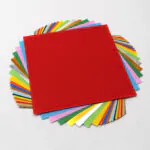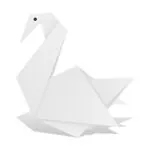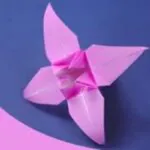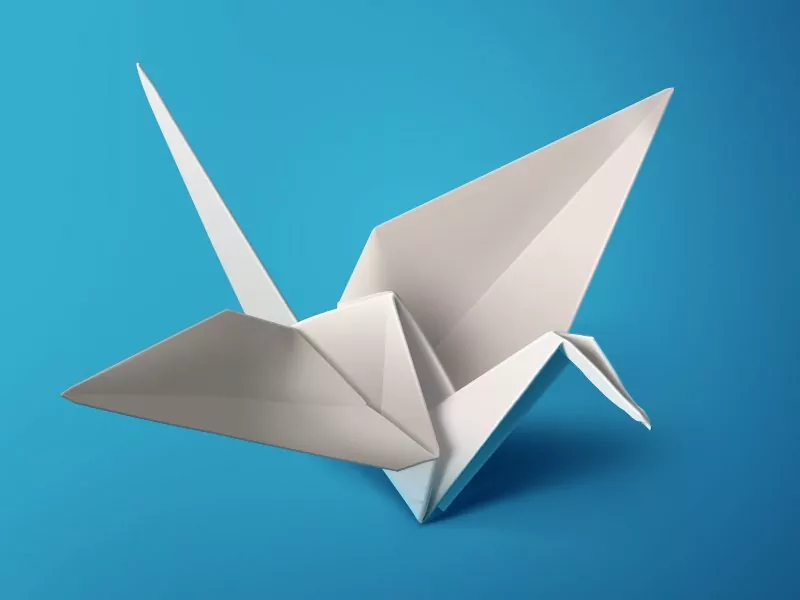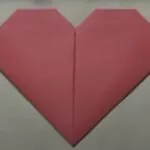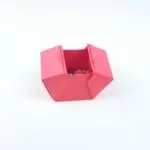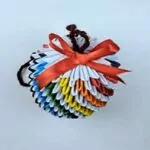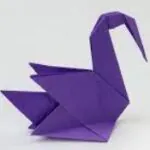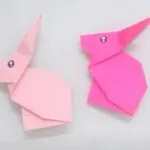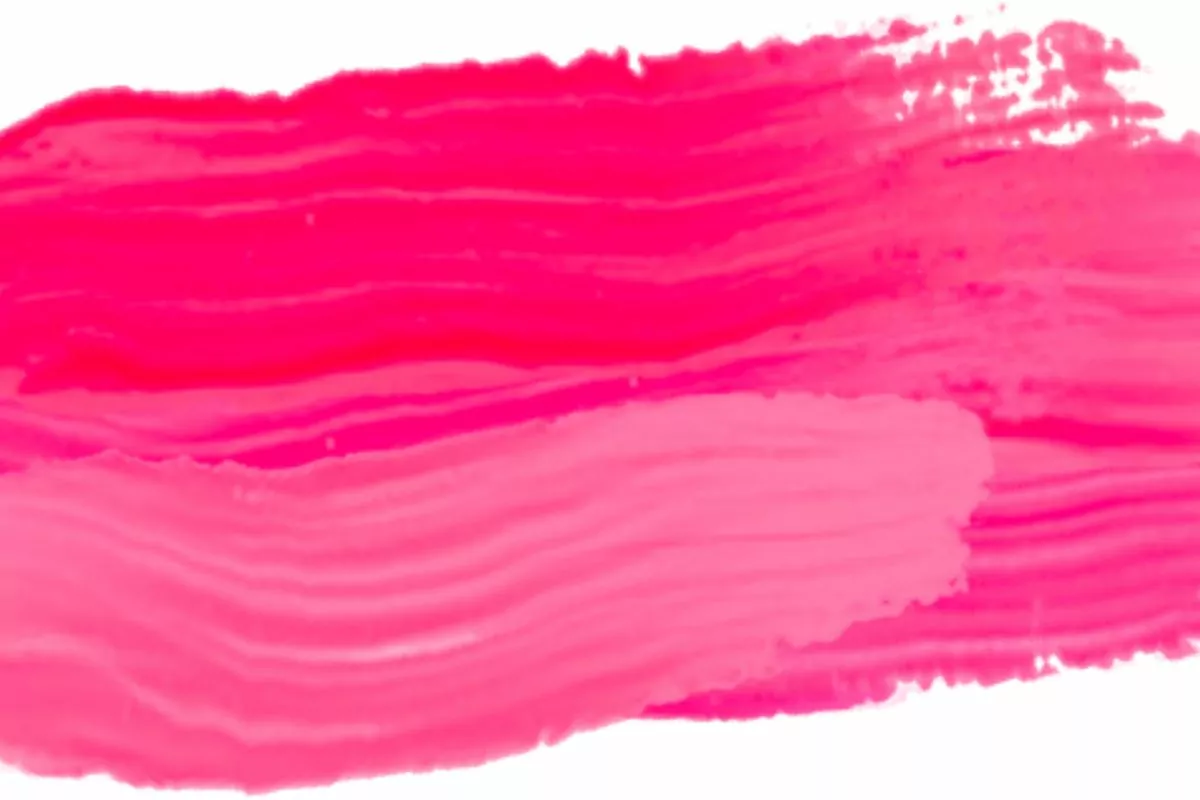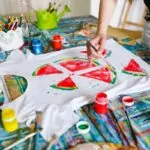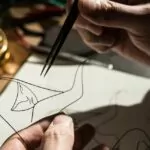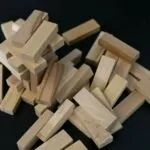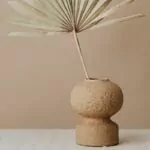Origami is the art of paper folding, which is often associated with Japanese culture. The Japanese word "ori" means "to fold", and "kami" (literally "paper") means what it says in English.
Typically, origami has a lengthy history. The "Senbazuru Orikita," which translates to "One Thousand Origami Cranes" and was written in 1797, is one of the earliest books about origami.
For centuries, however, people most frequently connected origami with Japanese culture. In a brief poem written in 1680 by Ihara Saikaku, who recalls a traditional butterfly design used at Shinto weddings, the earliest explicit mention of a paper model in Japan is made.
The poem reads Rose-ga yume-no cho-wa orisue (The butterflies in Rosei’s dream would be origami) and in the poem, he referred to an origami model called Ocho Mecho (Male and Female Butterflies) as “orisue” which is used to wrap sake bottles at the wedding ceremony.
However, in modern usage, the term "origami" is used to refer to all folding techniques, regardless of where they originated from in terms of culture.
Traditional sources used a variety of starting forms in the past, frequently with cuts, and added color or markings after the model had been folded.
However, modern origami, which is based on a distinct paradigm, began to emerge in the 20th century. The folding patterns used in contemporary origami are regarded as "models" that "origami inventors" "made".
The diagrams which show how a model should be folded are significant because they serve as a representation of the model itself. They must display the complete folding sequence of the model.
Although origami refers to the art of paper folding, it has many areas of practical application such as in the science and engineering field where scientists and engineers create active action origami structures using a range of smart material technologies.
Origami can also be used to make a variety of geometrical designs that are challenging to make with a compass and a straightedge. For instance, you can use paper folding to trisect an angle and double a cube.
How to sell origami
Over the past forty or fifty years, origami has undergone significant development. Thanks to the advancement of sophisticated design methodologies, models that are significantly more complicated have been created.
Origami creators have emphasized interpretation and inventiveness in the creation of origami designs. These innovations have led to the creation of origami creations that are stunning, dramatic, and mind-blowing.
Historically, origami designs were created in different cultures and some of these designs were adopted into other cultures predominantly in Asia and Europe.
Japan imported Friedrich Frobel’s kindergarten system and German paper folding concepts when it opened its borders later on in the 1860s as part of a modernizing effort. Some of the concepts they adopted included the prohibition of cutting and the initial design of a square with two colors.
These concepts were incorporated into Japanese tradition alongside some folding techniques from Europe replacing the traditional Japanese sources.
However, with the emergence of the internet, the mode of selling origami has developed beyond the traditional modal of selling origami.
In this age, you can sell origami online using various marketplaces available. These marketplaces allow you to create and launch your origami business online by owning an eCommerce store where you can upload your origami designs.
There are numerous types of origami designs thanks to the wide exploration of the art and you can market all your different origami models through your online store.
You can display your designs in your store and customers can easily access your origami store and purchase what they want from anywhere in the world.
However, when contemplating how to sell your origami design, one important issue to consider is copyright.
[ Many people whether Origami qualifies as as skill. If you have the same question find the answer here ]
Origami copyright
Origami is an art and as it is in any creative field, copyright is typically an issue of controversy within the origami community.
Also, although, the selling and distribution of copied designs have become quite simple thanks to the internet, the issue of copyright in origami designs and the use of models has become an increasingly relevant issue within the community.
It is usual to give both the designer and the folder credit when displaying origami models. It has been claimed that origami artists typically reserve complete economic rights to designs and models, though the extent to which this can be enforced has been questioned.
In contrast to folding a design for payment or the commercial use of an image, for instance, a person who folds a model using a legally acquired design may publicly display the model unless such rights were expressly reserved.
However, on the other hand, many origami enthusiasts argue that copyright should be eliminated because it stifles innovation in creative arts. Some also say that copyright violations "democratize" creation by making everything available to everyone.
But according to a Japanese court, the origami model folding process "comprises an idea and not a creative expression, and is therefore not protected under the copyright law."
The court added that the process for folding origami is in the public domain and that it is impossible to avoid using the same folding creases or arrows to show which way to fold the paper.
Therefore, it is permitted to redraft the folding instructions for a model made by a separate author, even if the rewritten instructions include parallels to the original ones that are "functional in character." The redrawn instructions may be published or even sold without the consent of the original author.
Even though "classic" origami models are in the public domain, the vast majority of published origami patterns are the work of more modern authors and cannot, therefore, be published or used for profit without the creators' consent.
Today, there is no lack of models that may be folded with the creator's consent and there is no need to violate copyright. More patterns are available than ever before, and instructions may be found online, in books, publications, videos, origami groups, and in magazines.
Different origami authors and creator groups have been established to promote permission requests and represent the copyright rights of origami artists.
- Cricut Hat Press: A Comprehensive Guide on Usage - August 13, 2023
- Unlocking Creativity with the Cricut Joy: A Comprehensive Guide - August 12, 2023
- The Ultimate Guide to the Cricut Maker Bundle - August 11, 2023

